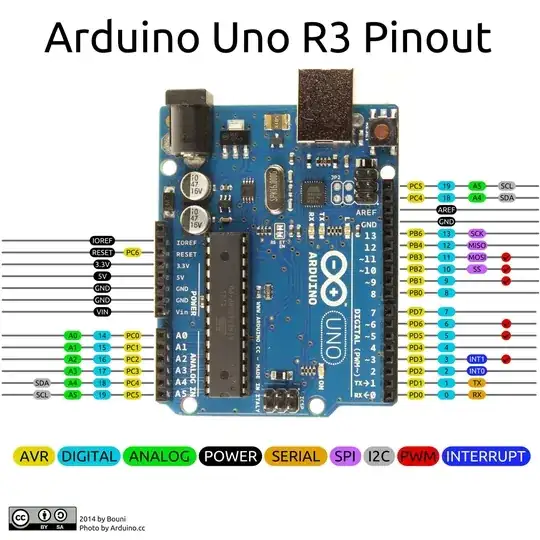Increase the number of digital pins
There are many posts that explain how to use more than just the standard pins on the various Arduinos, but none of them properly explain the limitations and problems.
Arduino Uno:
1. You can use the analog pins
Pin 14 = Analog in 0
Pin 15 = Analog in 1
Pin 16 = Analog in 2
Pin 17 = Analog in 3
Pin 18 = Analog in 4
Pin 19 = Analog in 5
digitalWrite(14,HIGH);
or
digitalWrite(A0,HIGH);
2. You can't use both SDA , SCL & A4 , A5 as they are basically the same (18,19).
3. You can also use the TX/RX.
"Don't do it, you break the serial communication..."
"Never use pins 0 and 1."
"You can't use the TX/Rx Pins."
You can... but you need to take precautions. Which ones?
It should have software serial over USB, right?
Or do I break the USB serial?
Are there internal Chip problems if I use TX/RX?
As I use those TX/RX pins in the code, I probably should not use Serial.print()?
What happens if I forget to remove Serial.print() after uploading the code that uses pins 0 and 1?
How to hardware reset the Arduino/bootloader if something goes wrong?
As there are various other Arduinos that use different chips, is the above valid for all Atmel chips?
So, what should I know before using those TX/RX, or also maybe the other analog pins?
There are cheap shift registers, PWM drivers, LED drivers, SPI, I2C, and more ICs to expand your I/O
But if there are no too big problems, it means that the Arduino has 20 I/O pins...
You could theoretically control:
17x3 = 51 = 17 RGB LEDs (multiplexing, PWMsourcing & sinking);
14x6 = 84 LEDs (multiplexing, PWM on 6 rows/columns);
10x10 = 100 LEDs (multiplexing, high-low);
20x(20-1) = 380 LEDs (charlieplexing, high-low);
// yes it would flicker
Correct me if I'm wrong. That means you are able to control 380 "Whatever" using diodes and one Arduino.
